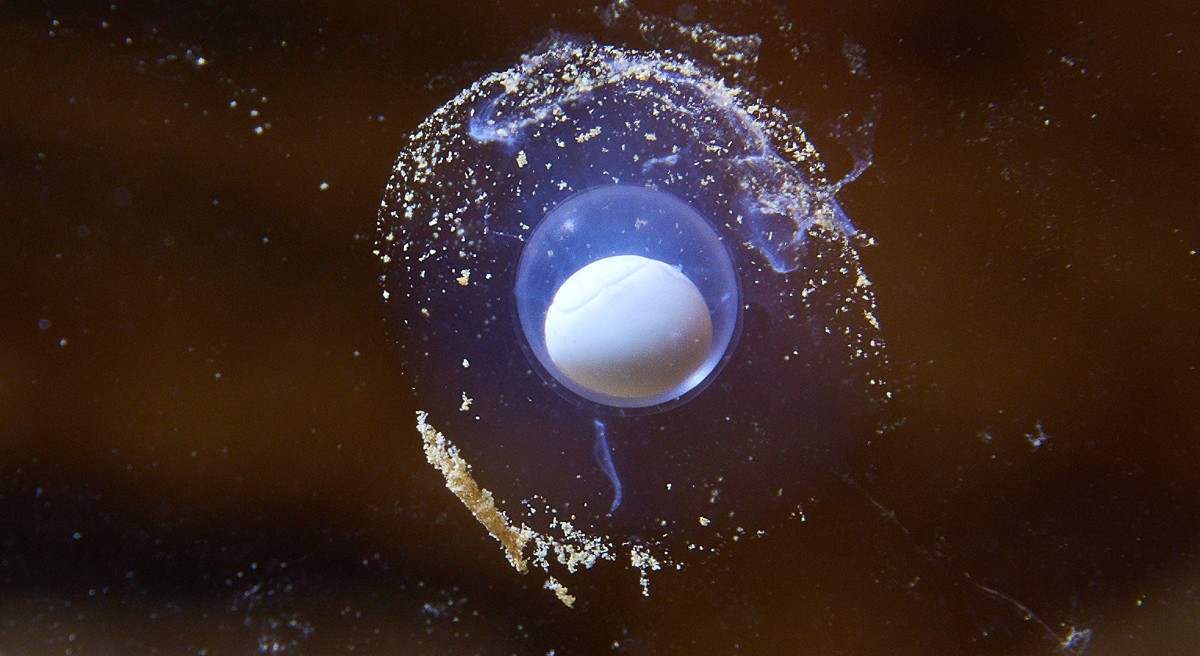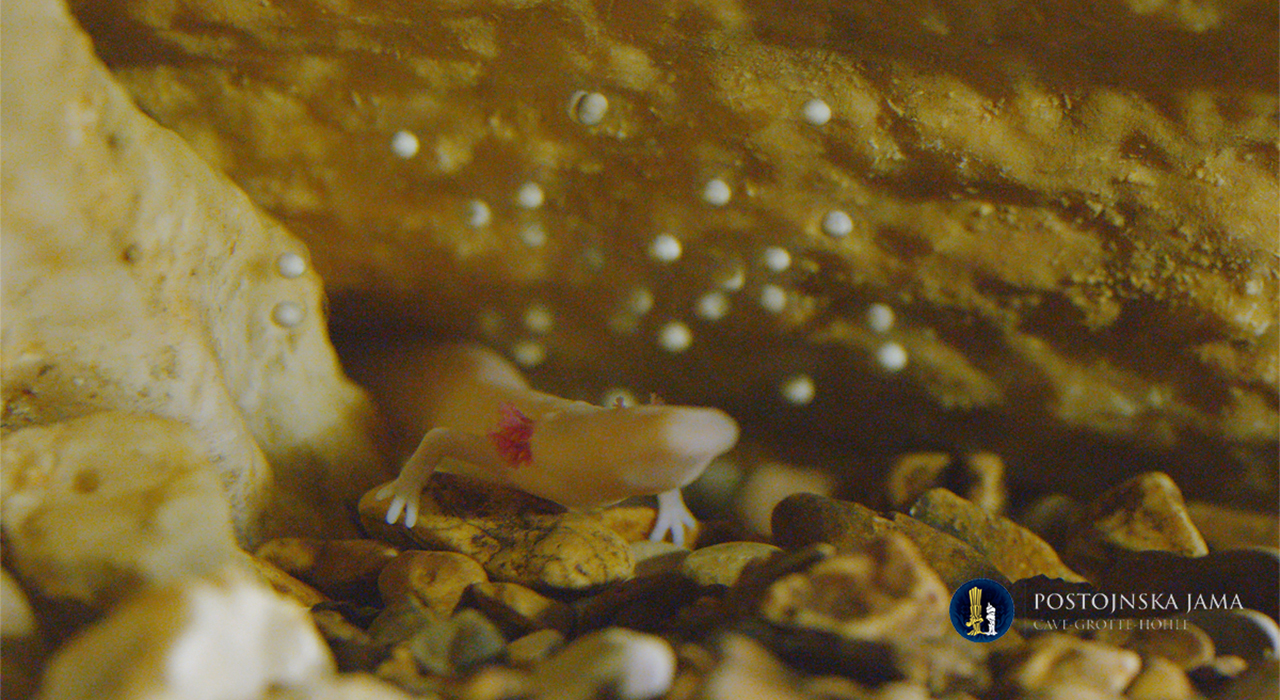There Be 'Baby Dragons'...Ready to Hatch in Slovenian Cave

A bevy of blind baby "dragons" may soon hatch in a Slovenian cave.
Biologists at Postojna Cave, a 15-mile-long (24 kilometers) cave system in southwestern Slovenia, are waiting with bated breath for the arrival of up to 55 baby olms (Proteus anguinus). These underground animals are also known as European cave salamanders, but locals call them "human fish," said Stanley Sessions, a biologist at Hartwick College in New York and a Fulbright scholar at the University of Ljubljana, Slovenia. That's because their cave-adapted skin lacks pigment and is a fleshy pinkish-white color.
Olms are the largest of all cave-adapted animals, but they have long been enigmatic, Sessions and his colleague, Lilijana Bizjak Mali, of the University of Slovenia, wrote in an email to Live Science. They can grow up to 16 inches (40 centimeters) long. In the 1600s, people saw the long, slim bodies of these salamanders washed out of their cave habitats by rain and mistook them for baby dragons — an understandable impression, given the olms' frilly gills, which look a bit like the neck frill of a fantastical dragon. The salamanders are blind, but very sensitive to smell, taste, sound and even electric fields, studies have found. [In Photos: Rare Birth of 'Baby Dragons' at Slovenia Cave]
Postojna Cave is a major tourist attraction, complete with an aquarium where visitors can see olms in captivity. On Jan. 30, a tour guide noticed a single olm egg attached to the glass. This marked the beginning of the 20-day period in which olms can lay up to 60 eggs. Since then, biologists have counted 55 eggs, mostly clinging to the bottom of a rock and guarded zealously by the olm mother.
Spring babies
The appearance of the eggs is occasion for excitement among biologists because rearing olms in captivity is difficult, Sessions and Mali wrote. What's more, olms live life in the slow lane: They don't reach sexual maturity until age 14, and they can live to be at least 70 years old. Their metabolisim is so slow that olms can go without food for up to 10 years. They also have an unusually large genome, Sessions and Mali said, with about 15 times as many base pairs of nucleotides as humans.
Olm embryos usually take about 4 months to reach the hatching stage, the researchers said, so the aquarium can expect spring babies. An infrared camera allows tourists to see the eggs without approaching the olm tank. It's not clear how many of the 55 eggs will actually hatch, but the offspring will look and function like mini-adults, Sessions and Mali said.
Sign up for the Live Science daily newsletter now
Get the world’s most fascinating discoveries delivered straight to your inbox.
"As far as we know, the newly hatched Proteus larvae simply disperse soon after hatching, which is a good thing since the mother or other Proteus could eat them," the researchers wrote.
Oddly, the embryonic olms will develop functional eyes, but their eyes degenerate after the early larval stage. By adulthood, the eyes are "nearly useless dots," Sessions and Mali said. [Creepy Crawlies & Flying Wonders: Incredible Cave Creatures]
Dragon habitat
Olms live solely in limestone caves of the Balkan region, and their range stretches from Italy through southern Slovenia into Herzegovina. Of the 250 locations where they are known to live, most are in Slovenia, Sessions and Mali said. They're protected in that country because of threats to their habitat. The International Union for Conservation of Nature lists olms as a "vulnerable" species.

Postojna Cave is an enormous series of passages carved out by the Pivka River. Tourist rail lines, first set down in 1872, carry visitors through networks of stalagmite-bedecked caverns.
The aquariums at the cave opened in 2010, and the fact that the cave's captive olms are laying eggs is a good sign that the aquarium habitat is well-suited to this sensitive species, Sessions and Mali said. Olms are particularly sensitive to water quality, which makes them a bellwether for pollution in general, the researchers said.
"If [olms'] water becomes polluted, so does the drinking water for humans!" they wrote. "So this is considered one of the most important aspects about the olm: It is an environmental indicator species that we must monitor for our own well-being as well as that of Proteus."
Follow Stephanie Pappas on Twitter and Google+. Follow us @livescience, Facebook & Google+. Original article on Live Science.

Stephanie Pappas is a contributing writer for Live Science, covering topics ranging from geoscience to archaeology to the human brain and behavior. She was previously a senior writer for Live Science but is now a freelancer based in Denver, Colorado, and regularly contributes to Scientific American and The Monitor, the monthly magazine of the American Psychological Association. Stephanie received a bachelor's degree in psychology from the University of South Carolina and a graduate certificate in science communication from the University of California, Santa Cruz.









